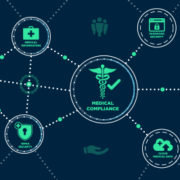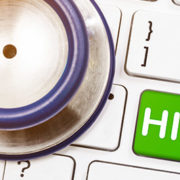HIPAA Security Rule: Your guide to physical safeguards
More than 1 million patients and health plan members had confidential information exposed in the first quarter of 2018 — twice the number of people impacted by data breaches in the fourth quarter of 2017. As cybercrime becomes a bigger concern in the healthcare sector, more medical professionals are cranking up their security credentials in order to safeguard valuable patient data.
HIPAA physical safeguards are a series of security standards that help you protect valuable information in your healthcare organization.
“Physical safeguards are physical measures, policies, and procedures to protect a covered entity’s electronic information systems and related buildings and equipment from natural and environmental hazards, and unauthorized intrusion,” says the Department of Health and Human Services.
Here’s everything you need to know about HIPAA physical safeguards.
1. Improve facility access controls
HIPAA lays down four facility access control specifications that improve physical security in your medical organization.
Contingency operations
You need to have a proper contingency plan in the event of a natural disaster or emergency. This will help you protect patient information and prevent data loss. Storing your data in the cloud instead of on a hard drive, for example, is one way to improve security. The result? In the event of an emergency, you will still be able to access confidential data from another device.
Facility security plan
You also need to ensure that you have physical access controls in place. This prevents unauthorized persons from accessing sensitive data and lets you control which members of staff view certain information. The latest physical access controls — smart lock systems, fingerprint sensors, swipe cards, etc. — will safeguard all the data you keep in your medical organization.
Validation procedures
Assigning different roles and functions to members of staff is another way you can protect information from ending up in the wrong place. Proper validation procedures will ensure the right people access the right information at the right time.
Maintenance records
HIPAA physical safeguards state that you must keep records of any external services you use. You will also need to keep notes about any physical modifications you make to your medical organization, such as replacing doors and locks.
2. Optimize device and media controls
As a healthcare provider, you will need to create a series of security procedures that safeguard the devices you use in your organization — desktops, laptops, smartphones, memory cards, hard drives, etc. HIPAA specifies that you dispose of unwanted devices in a safe and secure way and erase data you no longer need. You will also need to erase protected health information (PHI) from your devices if you want to re-use them.
You should also invest in a data recovery strategy, where you will be able to access healthcare information if your systems go down or malfunction.
3. Monitor workstation use
Negligent employees are the number one cause of cybersecurity breaches, according to a recent study. That’s why it’s so important to monitor staff who use IT infrastructure to collect and access PHI.
HIPAA physical safeguards stipulate that you limit workstation use to authorized users and implement security procedures to protect confidential patient information. If you don’t, you could expose sensitive data to the wrong people.
Final thoughts
If you run a medical organization, adhering to HIPAA physical safeguards is imperative. Failing to take the proper safety precautions could result in expensive fines from the government and jeopardize patient trust. Follow the tips above in order to stay HIPAA compliant.
Want to keep reading about the Security Rule? Check out the following articles:
HIPAA Security Rule: Your Guide to Administrative Safeguards






